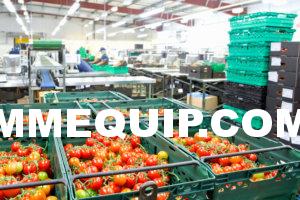Ways forward for productivity in the industrial food processing industry

Food processing industries have tremendously transformed agricultural products into modern-day advanced and complex, yet convenient edibles. The widespread adoption of post-harvest activities adds value to the raw food materials and products resulting in creating an opportunity to transform small-scale operations into state of an art facility. These facilities are running, managed and adapted with advanced tools. With limited resources the high efficiency and maintenance equipment, the food processing facilities move towards sustainability, but also enhanced productivity in the sector as well. Globally food processing plants rely on heavy and advanced technologies, but the productivity of the industries prospers through innovative manufacturing practices.
Why is Food processing Equipment considered important for innovative practice?
The food processing equipment is considered a major asset for the industry, thus the productivity strategies must also focus on cutting-edge practice where production cost is reduced and boost streamlined operations. Some of the best practices for improving productivity in the food processing industries are as follows.
Efficient tools and Machinery
For any emerging food processing facility, choosing the right tool and machinery makes all the difference. The principle mechanical design of the food processing tools must be engineered on resisting corrosion cost-effective and comply with FDA safety provisions. The food processing plants need to have their improved tools and machinery designed to the standard of hygienic equipment improvisions that echo cleanability and reduce bacteria and contamination for operations.
The industrial food processing plant needs to oversee the physical risk assessment of their tools for occupational hazards and durability for non-toxic, non-absorbent and corrosion resistant. Machinery in its finest state-of-the-art position motivates the plants’ workforce with less labour and concentrated efficiency. The labour of the food processing industries adopts smooth operations via equipment, reducing fewer casualties and distractions with improved productivity.
Scheduling a proper maintenance plan
Another way to optimize the productivity of the food processing industry is the maintenance plan and update the maintenance policies for sudden equipment failure, and major downtime replacement of machinery or parts. Inventory breakdown directly affects the productivity and operations at the industrial level resulting in millions of dollars lost. Thus, preventive maintenance practice in the industry, not only assist in protecting the tools and food processing equipment but also provide the right precautionary preparation in the hour of crisis or breakdown. For many smooth food processing plants, the predictive maintenance approach acts as collecting data for improved industrial checks and failures concentrating on sound and sensory failures for possible alteration or fixing and this altering manager and manufacturers.
M&M Quality food processing equipment
Food processing industries in the contemporary era strive for quality designs for efficient productivity. It is also true that they are faced with timely challenges in the delivery and safety of the labour. The vigilance of the plant owners reduces distractions and costs while improving reliability and efficiency in the industrial food processing sectors.
Presently, M&M’s quality food processing and packaging equipment are the best in the market that caters to the quality and presents measurable checking points for upgrading the inventory in the food processing industry. The distribution of the efficient inventory in the food processing sector for smooth operations presents a new wave of improved mechanical designs not only in processors but transforms the industrial grinders, tenderizers, slicers and other stainless steel equipment necessary for essential quality-based practice and way forward.
